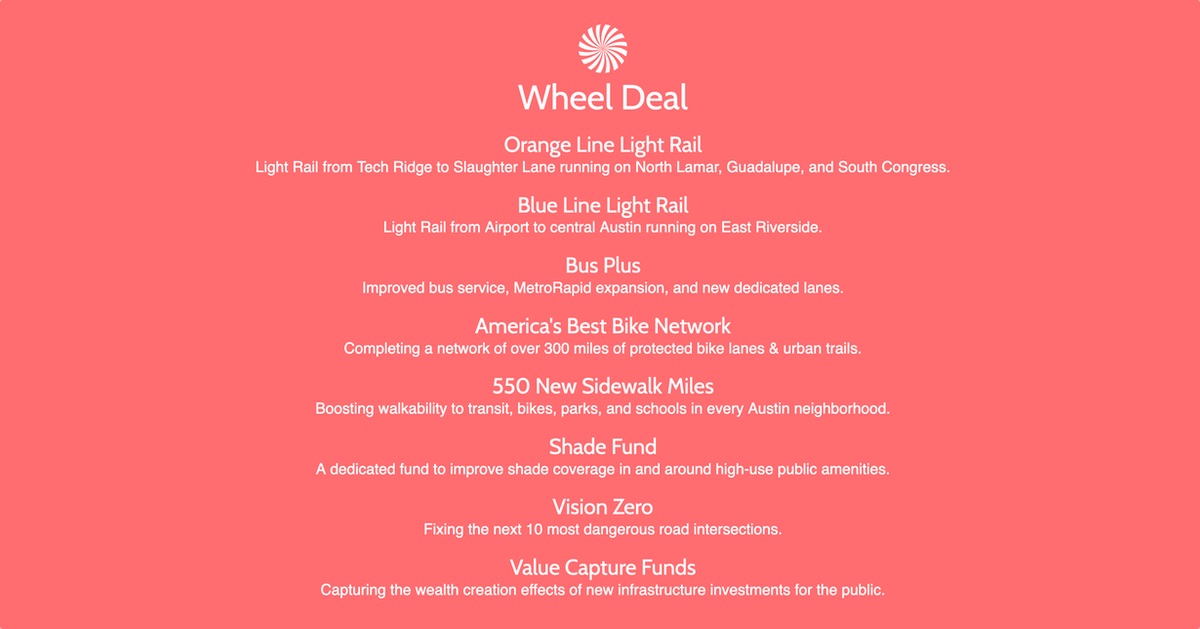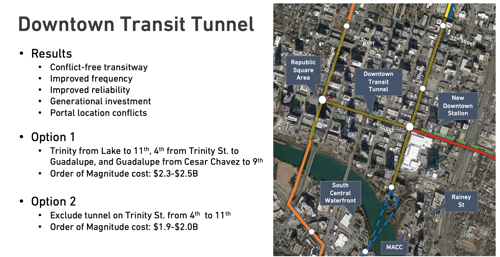
Over the last two months we’ve received substantial feedback on our draft in a variety of informal settings (one-on-one meetings, social media, email). We also received meaningfully substantive amendments through our formal feedback process. The memos we received through that process are posted on our Feedback page. We have posted our team’s official response to the feedback memos we received.
In the sections below, we:
outline each of the investment planks included in the finalized plan
discuss any changes made from the draft plan
succinctly explain our reasoning for including the plank in the final plan
Orange Line Surface LRT
There was wide support for our draft’s choice of surface LRT for the Orange Line. It’s the cost-effective approach to LRT and the latest data makes it clear that LRT is the only proven technology that has the needed capacity for this route. We updated our cost figures to match the newest, low-end official estimate and also added a pro rata share of the downtown transit tunnel and support facilities. As a result, the local cost went up to $3.177 billion from $1.37 billion in our draft.
Blue Line LRT
Our pragmatic rationale for keeping the Blue Line LRT segment from the airport to downtown remains the same as in our draft. We also updated these cost figures to match the newest, low-end official estimate, while also adding a pro rata share of the downtown transit tunnel and support facilities. As a result, the local cost went up to $1.171 billion from $768 million in our draft.
Bus Plus
Our final version of the bus investment plank shifts from purely emphasizing new MetroRapids and instead invests in better overall bus service. We adopt the official MetroRapid expansion estimates and add $18 million for non-MetroRapid capital improvements. We also allocate a pro rata share of the downtown transit tunnel and support facilities. Our finalized bus plank costs $167 million. This is a reduction from our draft’s $280 million mostly because we did not include federal matching funds in the draft cost estimate, but also because our preliminary MetroRapid expansion estimate was too high.
Downtown Transit Tunnel & Support Facilities
Our final plan includes the local share of the total $1.9 billion cost for Option 2 of the Downtown Transit Tunnel (the “little h” option). Option 2 excludes tunnel construction on Trinity from 4th to 11th. We believe that the benefits to reliability in the long-term are worth the substantial cost. While we think the connection between Orange and Blue is critical to a compelling system, we still found the tunneling on Trinity from 4th to 11th to be too expensive given our overall stance on the Blue Line alignment.

We also include half the cost of the needed support facilities, as we expect CapMetro itself to share in those costs through its conventional capital projects budget.
Active Transportation
We adjusted our bike plank to reflect the latest estimates on the cost of completing the All Ages and Abilities network, as well as more realistically reflect the other currently well-understood, actionable bike projects. Our proposed bike investment decreased to $350 million from our draft’s $684 million. We adjusted our sidewalk investment plank to maintain parity with our bike network spending.
Value Capture
We adjusted our approach in several ways. First, we switched the land acquisition fund from a major transition in how transit operations are funded to a “pilot” project approach to develop local consensus and understanding on transit-facilitated development-oriented value capture. We also added a transit-oriented development fund as a dedicated anti-displacement funding stream. Finally, we made clear that these funds are intended as complements to the use of Tax Increment Financing and Public Improvement Districts. The overall funding level for value capture decreased from $595 million to $100 million.
Vision Zero
Our Vision Zero funding level remained the same at $35 million while adding some small-scale improvements as investment options in addition to our draft’s focus on intersection redesign.
Shade Fund
The shade fund plank ($10 million) was unchanged.
Total Cost
The Wheel Deal’s total cost increased to $5.36 billion from our draft’s $4.377 billion. This worksheet shows our calculations, as well as two other “remixes” of our draft proposal that we considered. We still expect that the plan will cost less than a dollar a day for the typical Austinite.